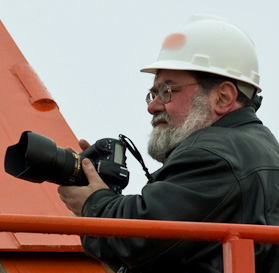The Dance - in very poor light...
I could use this space to brag about my granddaughter, but the theme of this blog is photography so here are a few tips to increase your chances of getting a relatively good snapshot of the kids on the stage. This photo isn't a work of art, but it's a nice reminder of the day. It was taken with a 3-year-old, compact, point-and-shoot camera that fits in my shirt pocket.
Equipment Matters
I know, if you read the photography blogs and discussion groups you constantly read that "equipment doesn't matter, it's the photographer that counts." Well, in general that's true. In this case, due to the lighting, we are pushing the boundaries. A camera with a bigger image sensor will gather more of that dim light. This is a tough job for the most expensive cameras. Leave the cell phone in your pocket and, at least, use a compact "point-and-shoot" camera.
Get Out of the Auto Mode
Today's cameras are amazing. They do most of the thinking for you. Even the simple point-and-shoot does a great job under average conditions. Unfortunately, the conditions at a dance recital are much lower than average. Get out of Auto. On many cameras, the settings you will need to change are hidden from you when your camera is in Auto. If your camera has a P (Program) setting, use it.
Get Close and Zoom-in
The dancers are in a pool of light surrounded by a sea of darkness. This is guaranteed to fool your camera's exposure computer. You want to eliminate as much of the sea of darkness as possible by getting physically closer and zooming-in. I was sitting in the middle row of seats when I took this photo. The camera lens was zoomed in as far as it would go.
Turn off the Flash
A built-in flash has a range of about 12 feet under the best of circumstances. These are far from the best of circumstances. The flash won't help. It will actually make it harder to get a usable photo. Most important, it will annoy the audience and distract the dancers. Turn it off. If you don't know how, read your instruction manual.
Turn Up the ISO
Your camera is not very sensitive to light. You can make it more sensitive by increasing the ISO (or sensitivity) setting. The camera becomes more sensitive to light as the sensitivity number increases. Unfortunately, the image quality also goes down as the ISO setting goes up.
This is where a better camera helps. Bigger cameras have bigger, more light sensitive, image sensors and the image quality doesn't suffer as much at higher ISOs. Like most things in photography, it's a trade off. And yes, you can find out how to change this setting in the instruction manual.
I set my camera to 3200 ISO for this photo. That's as high as the camera goes and a setting that looks so bad that I only use it when there is no other choice.
Experiment with Exposure Compensation
All that black in the picture will fool your camera's exposure computer. It may make actually over-expose the dancers. If the dark parts of the photo are gray (instead of a deep black) and the dancers are too bright, try setting the Exposure Compensation to -1 or so. Yes, this is in the instruction manual.
When you get home, Crop
The original. Crooked and too far away.
You're probably not sitting in the most ideal spot to take a photo.
Use your editing software to crop the photo so it looks more pleasing.
I've included the original version of the photo in the inset. It looks like I didn't even hold the camera straight.
Is that a lot?
Well, that's why they say "It's not the camera, it's the photographer that counts." If you want average photos, leave the camera in Auto and take your pictures in the sunshine.
Getting out of the Automatic mode and learning how to use just a few of the features on your camera, even compact point-n-shoot cameras, can result in much better photos.
GS
